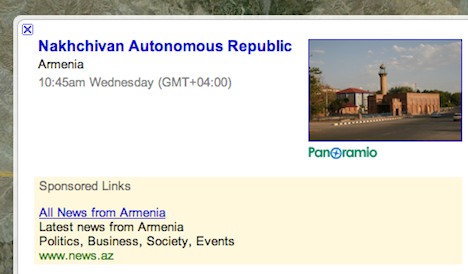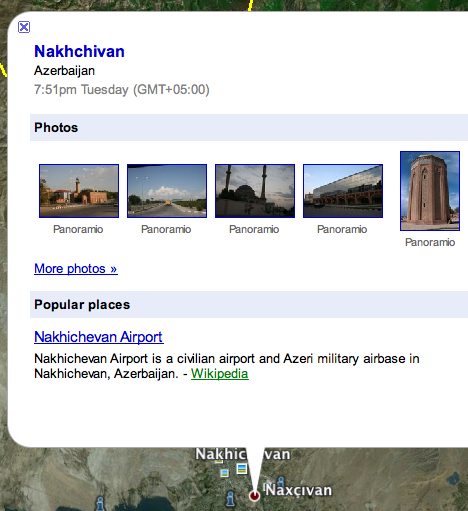Clearly I still have a lot to learn about what you can and cannot get away with in China. A few weeks ago, when Google replaced its automatic redirect of google.cn to google.com.hk with with a clickable image that functionally amounted to a manual redirect, I was convinced that this cosmetic change would not cut it as a ploy to get Chinese authorities to renew google.cn’s license to operate in China.
But in the intervening weeks, there were signs that a compromise might be reached: The existing license number appeared on google.cn, as required by Chinese law; and links appeared to three apolitical and China-facing locally hosted Google services — music, products, and translation. This way, Google (and those Chinese authorities favoring Google) could argue that google.cn was not an empty husk used to skirt Chinese law, but a functioning website providing real services, just not search anymore.
And this argument has just won the day. Face has been saved all round, the license renewal has been granted, and everybody gets a solution they can live with.
But missing conspicuously from this newly happy arrangement is any mention of the localized version of Google Maps, ditu.google.cn. It’s not linked to from google.cn, but it sure is on the same domain, and served from within China to Chinese users, on servers that need to be in compliance with Chinese law.
ditu.google.cn is, however, linked to from the mainland-China optimized google.com.hk search page that Chinese users land on when they manually redirect themselves from google.cn. (Click on the yellow button once there). If you switch to the Hong-Kong optimized version, you get a link to maps.google.com.hk instead.
The plight of ditu.google.cn has already been documented in detail here on Ogle Earth. Briefly, in May new stricter rules issued by China’s State Bureau of Surveying and Mapping required the re-submission of all China-based internet maps for approval. The draft list of 23 approved applicants released at the end of June included no foreign companies, hence no Google, though competitor Baidu is on the list. ditu.google.cn’s future is up in the air.
There are differences between ditu.google.cn and maps.google.com.hk: The HK version lets you overlay user-generated content from Panoramio, Youtube, Wikipedia and webcams; The CN version does not, as required by Chinese law. The HK version shows the disputed border areas between China and India inside dotted lines; on the CN map it all belongs to China, as required by Chinese law. (Other changes are cosmetic — the HK version will prioritize local placenames outside China, and its buttons use traditional Chinese characters.)
Objectively, then, the HK version of Google Maps is better in every respect. The CN version of Google Maps is censored to comply with Chinese law.
But didn’t Google tell us back in January that it was “no longer willing to continue censoring our results on Google.cn”? And, surely, queries on Google Maps lead to results? By continuing to offer ditu.google.cn, Google has not yet fully implemented its decision to stop censoring in China.
Pace Jeff Jarvis, What Should Google Do?
Well, now that we know that Chinese authorities will tolerate a manual redirect to an uncensored search engine outside the great firewall, why not adopt this model for Google Maps? Kill ditu.google.cn and redirect users to a Simplified Chinese version of maps.google.com.hk (the map tiles remain the same). The HK version of Google Maps is already accessible to mainland Chinese users, just as Google.com and Google.com.hk have always been.
Or better yet, stop kowtowing to China’s State Bureau of Surveying and Mapping and let them kill ditu.google.cn by keeping Google off their approved list. Then everybody gets their way — and Google will truly be able to say it no longer censors its China-facing services.


